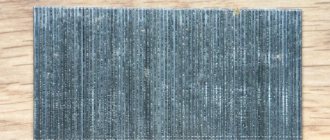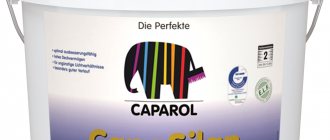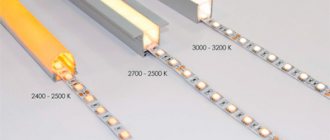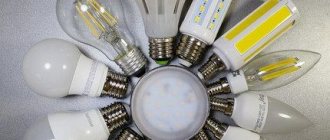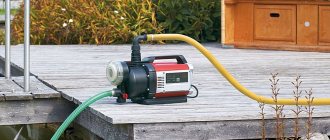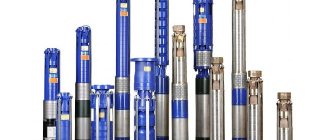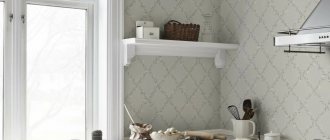Many city residents are familiar firsthand with the age-old problem of seasonal shutdowns of hot water supply. And it’s good if the temporary discomfort lasts only a couple of weeks. It happens that this period is calculated in months. For country properties, you will have to worry about heating the water yourself for the entire season or even a year. In such situations, one of the optimal solutions is the use of electric water heaters. The best instantaneous electric water heaters are in our rating today.
What is an instantaneous water heater
Purely structurally, this device is a small container into which a heating element is inserted, connected to an alternating current network. Two pipes are also connected to the container. During installation, one is connected through flexible hoses to the water supply network, the second to the mixer. And this whole structure is enclosed in a beautiful case: metal or plastic.
The operating principle of an electric instantaneous water heater is as follows:
- as soon as we open the mixer to use hot water, water begins to flow from the water supply into the container with the heating element;
- the heating element itself immediately turns on;
- water, in contact with the latter, begins to heat up;
- and under pressure enters the opposite pipe, and accordingly into the mixer;
- closed the last one, the supply of both water and electric current to the device automatically stops.
Now you understand how a flow-through heater works. Let's move on to the selection criteria.
A diagram showing the operating principle of an instantaneous water heater Source spravkavrn.ru
Which company should you choose?
When choosing an instantaneous water heater, you should give preference to reliable and trusted manufacturers, such as:
- Thermex is an international group of companies, the largest specialized manufacturer of water heating equipment;
- Bosch is a well-known German company whose products are traditionally of high quality;
- Electrolux is a Swedish company, one of the world leaders in the production of household and professional appliances;
- Stiebel is a company associated with hot water and characterized by high technology and cost-effectiveness of its products;
- Timberk is a Swedish brand owned by Arima Holding Corporation, which specializes in the production of climate control equipment;
Selection rules
Let's start with the fact that this device is represented on the market by an enviable assortment. All companies that produce household appliances also offer electric instantaneous water heaters. Therefore, it costs nothing to get confused in all these models.
The first thing you need to pay attention to when choosing this device is the complexity of its design. The simplest device for an instantaneous water heater is a tank enclosed in a housing where the heating element is located. There are no additional options in it. That is, open the tap and get hot water at a certain temperature - 40-60C. These are small-sized units that are usually installed on one consumer, and more often on a kitchen sink.
On the market today you can find very simple models, which are faucets or mixers of unusual shapes and sizes. That is, the heating element is enclosed in the faucet body, which makes it possible not to install the two elements separately. The photo below shows just such a model.
Mixer with built-in heating element Source yandex.net
All other models have different control methods, and this is why they differ from each other. Here we need to talk about two varieties:
- with hydraulic control, also known as mechanical;
- electronic.
The first type is, in fact, the same simple model. But it has a built-in control unit with which you can regulate the temperature of the supplied water and its pressure. The control unit is presented in these models in the form of a step switch.
The operating principle of this type of instantaneous water heater is that, using buttons or levers on the control unit, a rod is set in motion, shutting off the water supply. That is, the rod either reduces the cross-section of the pipe or increases it. Accordingly, the pressure either decreases or increases. And since in instantaneous water heaters the pressure directly affects the temperature, accordingly, at low pressure the water temperature will be higher, and at high pressure it will be lower.
Water heater with mechanical control Source ekb-holod.ru
Such models are actually very simple, hence their low price. But it is precisely this simplicity that prevents precise adjustment of the parameters of the liquid passing through the device. In this regard, devices with electronic adjustment are more accurate. With their help, both the temperature and water pressure are set very accurately. Sensors are installed inside the control unit that respond to changes in these parameters, also changing them according to the previously established mode. This is a big plus that can be used wisely by choosing the optimal mode. For example, washing dishes will require a high temperature, while showering will require less.
Before choosing an instantaneous water heater from the models proposed above, you must take into account how many consumers the device will provide with hot water. If it is one or two, for example, a shower and a sink in the kitchen, then it is better to install a model with mechanical adjustment. If there are many consumers, for example, a sink in the kitchen, a sink in the toilet and bathroom, and more than one shower, then it is optimal to give your preference to a model with electronic adjustment. The only disadvantage of the latter is the high price.
Electronically controlled water heater Source masterwatt.nl
Water heating device power
This is one of the main characteristics that you need to pay attention to when choosing an instantaneous water heater. Firstly, it should be noted that power, also known as productivity, is the amount of heated water that the device can heat to the required temperature in a certain period of time. Typically this parameter is measured in liters per minute - l/min.
For example, a low-power water heater has this characteristic equal to 3-5 l/min. This water is enough to take a shower or wash dishes. In this case, the water is heated in 5-10 seconds.
There are certain formulas that can be used to calculate the performance of an instantaneous water heater. They are usually used by specialists. Ordinary people don't need to know them. Just look at the product passport, where the manufacturer indicates this characteristic. This document usually also indicates the purpose of the device. That is, for what purposes it can be used. For example, only for washing or only for showering, or for several consumers at the same time.
All characteristics are indicated in the product passport Source irkutsk.santech-control.ru
But it should be noted that the performance of a water heater depends entirely on the power it consumes. This refers to the power of the heating element, measured in kilowatts (kW). For example, a power of 8 kW - this water heater is enough to provide hot water to a small cottage. This is for both the shower and the kitchen at the same time. If you require a wider hot water supply network, in which there are several consumers, then it is better to install an instantaneous water heater with a capacity of at least 20 kW.
But here it is necessary to take into account the location of consumers. For example, if the bathroom is located far from the kitchen, then it is better to install two low-power units separately for each plumbing fixture.
As for the power of instantaneous water heaters, today on the market you can purchase single-phase and three-phase devices. The power of the former does not exceed 10 kW. The power of the second is from 5 kW and above. Three-phase models are better in the sense that they create small loads on the electrical network of the house. The higher the power of the device, the more you will have to pay for the electricity consumed.
Attention! Before choosing an instantaneous water heater, you need to make sure that the wiring in the house matches its power. Otherwise, the supply cable may burn out.
Therefore, even before installing the water heater, experts recommend checking the wiring for compliance. It’s better to make a separate section from the distribution board. In this case, a separate circuit breaker and RCD must be installed inside the latter.
Electrical connection diagram Source remont-system.ru
What performance do you need?
As we already said, performance largely depends on power. However, this indicator is written in the characteristics of the heater, so you do not need to calculate it using any formulas.
It is important that the performance of the device matches the performance of the water collection point. In the article on choosing a pumping station, we provided a detailed table with water consumption for each point. Here we just point out that for a washbasin the flow rate is on average 10 l/min, and for a shower 12 l/min. Of course, it is very difficult to find a flow-through heater with a capacity of 10 - 12 l/min, and its power will be very high. What to do then? You can take a device with a capacity of 5 l/min, but the outlet temperature will be lower than stated by the manufacturer. a Timberk WHEL-7 OSC gravity heater to the tap , we get a capacity of either 4.5 l/min with an outlet water temperature of 60°C or, if we open the tap to maximum, 9 - 10 l/min at a temperature of 40 °C. 40°C is a completely normal temperature for washing dishes or taking a shower.
By the way, if you need water only for domestic use (for example, at a seasonal dacha), you can buy a heater combined with a mixer. It's cheaper and doesn't take up any space at all. Many models allow you to preset the water temperature so you don't have to adjust it manually.
Type of heating elements
Another criterion that will help you find the best instantaneous water heater. Today, manufacturers offer two types of heating elements. This is a regular heating element, that is, a tubular element, and a spiral element.
Heating elements of the second type are devices in which the spiral is open and uninsulated. In this case, the element itself vibrates during operation. And these are conditions under which scale does not settle on the heating element, which increases their service life.
It is difficult to say which of the two elements is better. Note that heating elements are cheaper, but their service life is shorter. Spiral ones have a longer service life, but if they fail, sometimes you have to completely replace the water heater itself. However, they are more expensive in price.
The only disadvantage of spiral options is that they are sensitive to air pockets. Therefore, the advice is to install dry-running protection.
Spiral heating element for water heater Source prorab96.ru
Operating principle of a flow-through electric heater
In flow-through models, water is heated as it passes through the main line. The principle of operation is as follows: the water pressure triggers a relay, which turns on the heating element (heater). Passing through the heating element, the water heats up and comes out at the water tap point already hot. The inlet water temperature is about 10°C, and the outlet temperature can be from 35 to 85°C, depending on the power of the device.
In some models, in which 2 - 3 heating elements are installed, the heaters can work either all at the same time or separately.
Classification of instantaneous water heaters
Having figured out how an electric instantaneous water heater works, and also having examined its characteristics, we move on to the classification of the device. In fact, the division is small, there are only two positions:
- non-pressure instantaneous water heaters, they are also open;
- pressure, they are closed.
The two types differ from each other only in that the first requires the presence of high pressure in the water supply network. Therefore, such units are installed where there is a need to connect several consumers. The latter work quietly even at low pressure in the water supply, for example, at standard pressure.
For pressure water heaters, additional pumps are installed, which create increased pressure. If the house has an autonomous water supply, then it is often enough to provide pressure to the installed electric instantaneous water heater.
That is, when choosing from two proposals, it is necessary to take into account the scale of the hot water supply network, plus the possibility of generating pressure in this network.
Nuances and rules of operation
Today, instantaneous water heaters operating from an electric current network are very popular. They entice their consumers with the fact that during their operation there are no restrictions on the volume of hot water supplied. That is, as long as the tap is open, hot water will flow out of it constantly. Of course, with an uninterrupted supply of electricity to the house.
But in order for the device not to upset you for a long time, that is, not to fail, you must strictly follow the requirements and instructions specified by the manufacturer. Here are some of them:
- the shorter the distance from the device to the consumer, the better, in this way conditions are created for reducing heat losses;
- if the water in the water supply network is hard, then it is worth installing a softener filter in front of the water heater;
- The unit cannot be installed in an unheated room;
- if you decide to install a water heater in a shower or bathroom, then try to do everything so that water does not get on it, it is still electric;
- if the water pressure in the water supply has dropped, then set the unit to medium temperature, otherwise it simply will not turn on.
Proper installation is the key to long-term operation Source teremrostov.ru
See also: Catalog of companies that specialize in the installation of engineering systems, ventilation and air conditioning.
All experts and manufacturers agree on one opinion - the first launch is carried out very carefully. What to do for this:
- check whether there is water in the home water supply, what its pressure is, whether it corresponds to the passport indicator;
- temperature adjustment is carried out only with the tap open;
- After the first run, it is better to disconnect the device from the electrical network.
Attention! In many brands and models, the set temperature remains the same after the faucet is closed. That is, when you turn it on again, the settings will be the same and you just need to change them as necessary.
And lastly, when purchasing an instantaneous electric water heater, be sure to check whether the wiring in the house matches its power. If not, then it is better to run a separate loop from the distribution board, as mentioned above.
Installation and installation of a water heater
According to manufacturers' recommendations, the best way to install electrical equipment is to use the services of professionals. However, the design and mechanism of an electric water heater is not very complicated, and all devices have an installation diagram, so you can install it yourself. It is worth knowing that installing the equipment yourself and subsequent breakdown leads to loss of rights to warranty service.
- Installation of a water heater. Initially, you need to decide on the location of the equipment. This is usually the wall next to the mixer to minimize heat loss. The weight of the equipment is light, so regular brackets will do.
- Connection to water supply. Depending on the type of equipment, the water heater is connected either directly to the cold water supply or to the pipes. In accordance with the installation diagram, it is necessary to connect the equipment; even the most minor deviations from the rules can disrupt the operation of the mechanism and lead to rapid breakdown. Manufacturers also recommend additional installation of water purification filters.
- Electricity supply. Conventional water heaters are simply plugged into the network. The main thing is that the load on the electrical network is correctly calculated. In the operating instructions you specify the maximum power consumption of the equipment.
Advantages and disadvantages
To determine the pros and cons of a instantaneous water heater, it must be compared with a non-flowing one, or rather with a storage one. So, flow-through:
- much smaller in size, hence the ability to install almost anywhere;
- electricity consumption only when the hot water tap is opened;
- heating speed immediately after installation – 20-25 seconds maximum;
- ease of operation;
- unlimited amount of hot water;
- does not require maintenance;
- reasonable price depending on the performance of the device;
- harmful bacteria do not multiply inside the unit, because the water is immediately used when heated;
- water does not lose its qualities.
Unlimited volume of hot water Source static-eu.insales.ru
Now a few words about the negative sides of instantaneous water heaters:
- water is heated mainly to a temperature of +60C, which is not always sufficient;
- the greater the power of the product, the higher the electricity consumption, which will negatively affect receipts in terms of increasing the payment amount;
- The more hot water is consumed, the more expensive it costs.
What conclusion can be drawn, taking into account the advantages and disadvantages of a water heater? If you live in a small house and your family consists of 2-4 people, then a flow-through heater is an ideal option for obtaining hot water. If the house is large and many people live in it, then it is better to install one large storage unit.
Large electric storage water heater Source blog.postel-deluxe.ru
Advantages and disadvantages
The main positive qualities of instantaneous electric water heaters are the following:
- Dimensions and weight . These figures are much smaller compared to large storage devices. The devices can be installed directly next to the tap and do not require the installation of additional pipelines. Most connections are made using cheaper flexible hoses. Heat losses are significantly reduced. Powerful wall mountings are not required, as is the case with storage water heaters.
- Economical . There is a lot of controversy about this, and the opinion of most users is in favor of storage devices. However, it all depends on the specific model and settings. In flow-through devices, the heating element is turned on only when the tap is open in order to immediately heat the water. After it is closed, the power is automatically turned off. Some smart devices determine the volume of water, and the automation turns on the required number of heating elements. Storage devices are always turned on and maintain the set temperature of the water in the tank. However, when certain indicators are reached, the heating elements automatically turn off and turn on again when the water in the tank begins to cool.
- Protection . First of all, flow-through heaters are protected from overheating, just like storage devices. There is water inside only during use, so they can be used in a bathhouse in winter. It is imperative to drain water from storage heaters, otherwise it will freeze and burst the container. Therefore, flow-through devices are often purchased for the dacha.
- Productivity . If the storage tank is completely empty, the next hot water will appear no earlier than in 1-1.5 hours, depending on the capacity. Flow devices, including pressure ones, provide heating of the liquid immediately after opening the tap. The temperature is then maintained stably until closing. You can use hot water without restrictions even all day long, unless, of course, you are afraid of large amounts of electricity bills.
- Price . Average prices are 3-5 thousand rubles, which is significantly lower compared to storage devices. Here the price threshold for more or less acceptable models starts from 7-8 thousand rubles. Therefore, such water heaters can be purchased and installed separately in such objects as a cottage, shower, kitchen, washbasin, etc.
A significant disadvantage of flow-through devices is their high energy consumption. You will need a more powerful cable, an appropriate socket and a separate circuit breaker. In new apartments, all this is already provided for by modern electrical wiring diagrams.
In addition, many users complain in their reviews that some models do not produce the water heating temperature declared by the manufacturer. These devices are completely unsuitable for a large family.
Rating of instantaneous water heaters
In this section, we will consider the TOP instantaneous water heaters operating from the electricity network. And we will consider according to the classification proposed above. The rating of non-pressure models will be offered first, the pressure models second.
The best non-pressure water heaters
The rating of instantaneous non-pressure water heaters is headed by the Zanussi 3-logic 5.5 TS with a power of 5.5 kW. Its positive aspects:
- power adjustment in three positions;
- weight – 1.5 kg, which simplifies the installation process and does not require a solid base;
- built-in protection against idling and heating element overheating.
Minuses:
- You can connect only to one consumer;
- there is no power cord that you will have to purchase;
- the power is high, so the cable from the panel must have a cross-section of at least 4 mm².
Next in the ranking is Electrolux Smartfix 2.0 5.5 TS, with a power of 5.5 kW. It has almost the same pros and cons. I just need to add that the plastic of the case is not very durable. Many consumers complain about this. In this case, the body turns yellow over time. But the device has a good service life - 7 years.
Electrolux Smartfix 2.0 5.5 TS Source static.onlinetrade.ru
How to choose a heater for a summer house
In most cases, summer cottages are supplied with water from local sources. Water fills special tanks installed at a height of 3-5 meters from the ground. This creates pressure sufficient for everyday needs.
However, such water pressure is clearly insufficient for mechanical heaters, for which the automation begins to operate when the pressure in the pipes reaches 0.4-0.5 MPa. Therefore, most conventional devices refuse to work in summer cottages.
Conventional storage devices are not always suitable. In this regard, non-pressure electric heaters are most widespread. They differ from storage ones in the principle of operation, which consists in electronic automatic switching.
Thanks to the settings, work is carried out even in the absence of pressure in the pipes. The main component is a thermal relay that turns the heating element on and off in accordance with the temperature of the outlet water. In this case, the volume of liquid flowing through the tap does not matter.
Video description
The video shows a flow-type water heater of the Timberk brand:
Second place goes to the Electrolux Smartfix 2.0 6.5 TS with a power of 6.5 kW, a capacity of 3.7 l/min, requiring an inlet pressure of up to 6 atm. The big advantage of this device is its operability even with low water pressure in the water supply system. Otherwise, it is not inferior to the first unit. But a significant disadvantage is the lack of a power cable with a plug. It will have to be purchased separately, taking into account a cross-section of at least 4 mm² with a connection to a machine of at least 32 A.
In third place is the original vertical type AEG BS 60E with a power of 6 kW, a capacity of 3 l/min, operating from water pressure up to 10 atm. The advantages include a good interface with convenient buttons for switching modes. There is protection against overheating of the heating element. You can even connect to an outlet for an electric stove.
As for the minuses, to raise the temperature to the maximum, you have to reduce the pressure to the maximum. In this mode, the device will operate for no more than 5 minutes, after which the overheating protection is activated. During operation, the power cable becomes very hot. It is required to install a machine with at least 32 A.
Ariston Aures SM 7.7
4.2/5
52 reviews
Buy Yandex Market
average price
RUR 4,199
Characteristics
- power consumption: 7700 W (220 V)
- net power: 7.7 kW
- maximum water temperature: 55 °C
- control: mechanical
- protection systems: overheating
- indication: switching on, heating
The fourth place is taken by Ariston Aures SM 7.7. Water heater of an Italian brand. Equipped with two heating elements with a total power of 7.7 kW. Maximum water heating is 55 degrees . Productivity - 4.4 l/minute at a temperature difference of 25 degrees.
The control is mechanical, implemented by a smooth rotary switch that regulates the operating power from minimum to maximum. LEDs indicate the selected mode. No additional functionality is provided. The advantage of the model is the price tag: 5,000 rubles - this is several times less than competitors from the TOP-3.
Pros:
- Price.
- Brand.
- Control.
- Fast heating.
Minuses:
- In the first two modes, the water is almost cold.
- There are no spare parts for sale.
- Some users experience lack of performance.
- Marriage happens.
Compared to the non-pressure models discussed earlier, it can be recommended for installation in an apartment for regular use . At the same time, judging by user reviews, it is not very reliable and therefore takes only 4th place. On the other hand, some users also have complaints about the durability of water heaters from the TOP-3. Therefore, we will not insist on overpayment several times over. If you are on a budget, choose Ariston Aures SM 7.7.
Reviews on Yandex.Market
Video description
The video shows an AEG brand instantaneous water heater:
The best pressure water heaters
Let's start with the fact that pressure models require a pressure in the water supply system within the range of 6-10 atm. Therefore, manufacturers recommend installing them in a water distribution unit. Typically, such water heaters are used to supply hot water to several consumers simultaneously. That is, they are used as the main source of hot water in the house.
There are only three models in our rating. And first place goes to Electrolux NPX6 Aquatronic Digital. This is a 6 kW device with a capacity of 2.8 l/min, requiring a pressure of up to 7 atm. What can you say about the advantages:
- modern design;
- electronic adjustment;
- good pressure from the watering can;
- connecting the pipes from the top is very convenient.
As for the disadvantages:
- the manufacturer does not recommend connecting with flexible hoses, which makes installation difficult;
- automation does not always work, especially at low pressure, so you will have to control the modes manually;
- water supply limiters are plastic - short service life.
Electrolux NPX6 Aquatronic Digital Source ya-rostislav.ru
The feasibility of using a heated tap
An instantaneous water heater for a tap is the most compact electrical appliance that provides hot water supply. The feasibility of using a compact device depends on the intensity and operating conditions.
To decide whether a mini-heater is suitable for your own needs, you should compare the pros and cons.
The main advantages of a compact water heater for taps:
- Compactness. This argument becomes decisive for small spaces. The heater takes up the space reserved for the faucet for installation on a bathroom sink, kitchen sink or countertop.
- Heating rate. Depending on the power of the model, the time to warm up to a comfortable temperature ranges from 10-30 seconds. Storage water heaters cannot boast of this quality - the boiler must be turned on in advance, at least 30 minutes before use.
- Consistency of temperature. In technically advanced heaters, the heating process is monitored by electric sensors that regulate the incandescence level of the heating element.
- Aesthetics. The diversity of the model range allows you to choose a water heating faucet to suit a specific interior style. Manufacturers offer specimens of different colors with a glossy or matte effect, unusual spout shapes and valves with original geometry.
- Easy to install. The technology is almost identical to installing a conventional tap. The difference lies in the need for power supply and grounding of the device.
- High efficiency. The thermo-faucet functions after the fact - it only heats up while using the mixer. In a state of "rest" electricity is not consumed.
The advantage of a small-sized module is its cost. The price for a water heating tap is less than for a full-size electric or gas flower, especially for a storage boiler.
The choice between a storage tank and a water heating tap is based on an assessment of needs: the required volume and temperature of water heating, mode of use, availability of free space, etc.
However, manufacturers of flow-through devices claim that their devices are economical, focusing on energy consumption exclusively when using water. While the storage boiler operates in the mode of maintaining the set temperature - the unit comes into operation every 20-30 minutes.
The main disadvantage of the flow generator is its high energy intensity. The average power of the heating element is about 2.5-4.5 kW. If you use your water heater regularly, your electricity bills will increase significantly.
Additional disadvantages of a water heater for a tap:
- Limited bandwidth. The volume of heated water is 4-6 l/min. For comparison, the productivity of a gas water heater is approximately 1.5-2 times higher.
- High network load. Installing a duct in a building with old wiring requires a separate cable. Regardless of the state of the electrical network, the flow generator must be connected through a reinforced socket connected to the RCD.
- Maintenance of one water intake point. It is impossible to divide the incoming volume of heated water into several streams. To organize hot water supply to several points, it is better to purchase a storage heater or a wall flower.
- Difficulty of repair. In the event of a breakdown, restoring the functionality of a portable module is problematic - in the retail chain, repair kits for such models are an order of magnitude smaller than for a wall-mounted electric heater.
When considering the purchase of a water faucet for a shower or a kitchen faucet, you should consider that low-power appliances can increase the water temperature by 25°. This indicator is sufficient in the warm season. With the onset of cold weather, with a significant decrease in the temperature of tap water, it is unrealistic to obtain the desired 35-40°C.
Modifications of the flow unit without adjustment perceive low water pressure as its complete absence - the flow module simply does not start working
Despite the indicated disadvantages, it is advisable to install mini-heaters in the following situations:
- instability of centralized hot water supply, when interruptions in the network are short-term - no more than a month;
- seasonal water consumption is typical for country houses and country cottages;
- organization of water supply in the summer kitchen of a private household;
- in hairdressing salons, beauty salons;
- in kitchens in buildings with individual gas heating - it is not profitable to turn on the boiler for washing dishes.
In a word, installing a heated tap is completely justified if hot water supply is not required constantly and in a limited volume.
Briefly about the main thing
The design of an instantaneous electric water heater is simple. This is a heating element placed in a container through which water flows.
Classification of devices: pressure and non-pressure. The former require water pressure in the plumbing system, the latter can operate from a tank that is installed above the water heater.
Characteristics of the units: productivity, power consumption of electricity, water pressure in the water supply system.
Rating of water heaters, which separately considers pressure and non-pressure models, as well as devices for sinks and showers.
Ratings 0
Security measures
Instantaneous and storage electric water heaters require the same safety measures. Two important points that cannot be ignored:
- Grounding installation. The heating element is in direct contact with water. In the event of an insulation breakdown, a current passes through the water, which is fatal to humans. Grounding takes the hit.
- Water heaters with reinforced heating element insulation belong to a high electrical safety class. Such devices can be installed without grounding, but the supply wiring is connected through an RCD. In the event of an emergency situation associated with current leakage, the protection will disconnect the circuit. The power supply to the water heater will stop.
In addition to important safety points, it is worth paying attention to the convenience of controlling the operating modes of the water heater. Their work should be understandable to all family members.
It is better to give preference to a flow-through device equipped with a water filter and overheating protection. The indicator for turning on and the temperature of the flow through is a small thing, but they let the user know how well the water heater is working.
